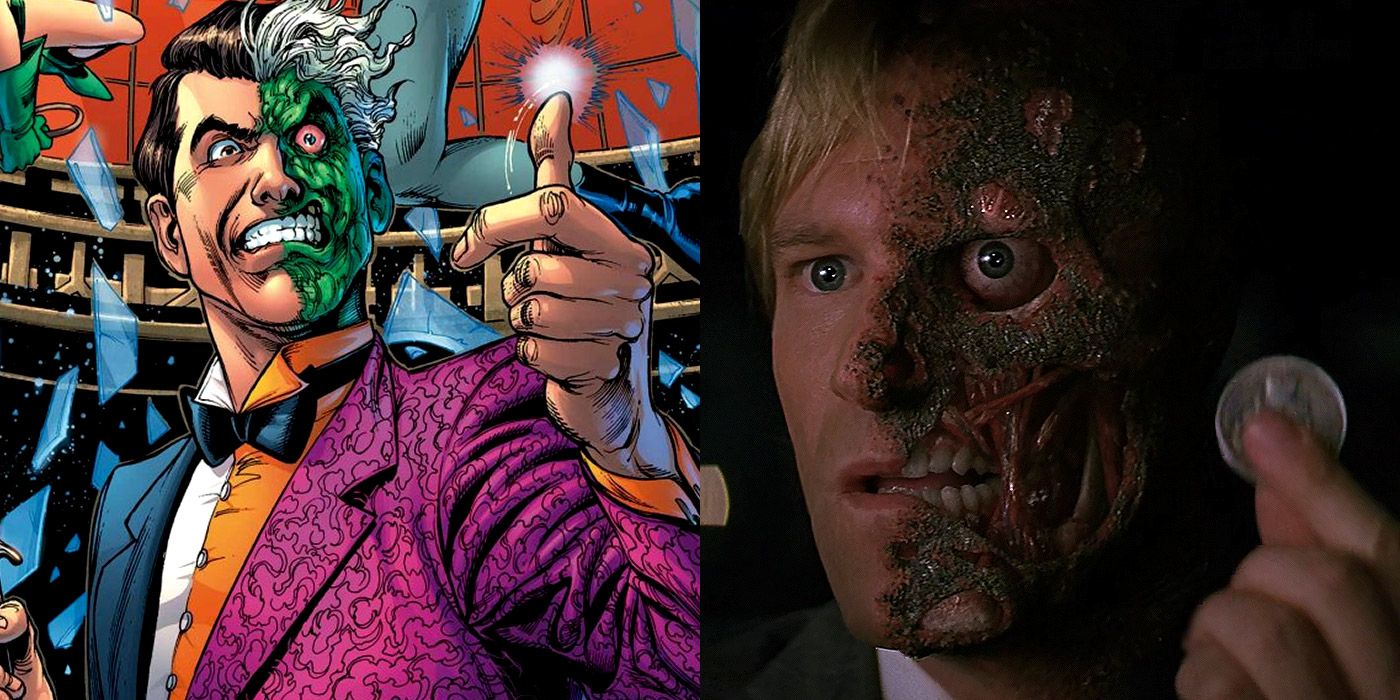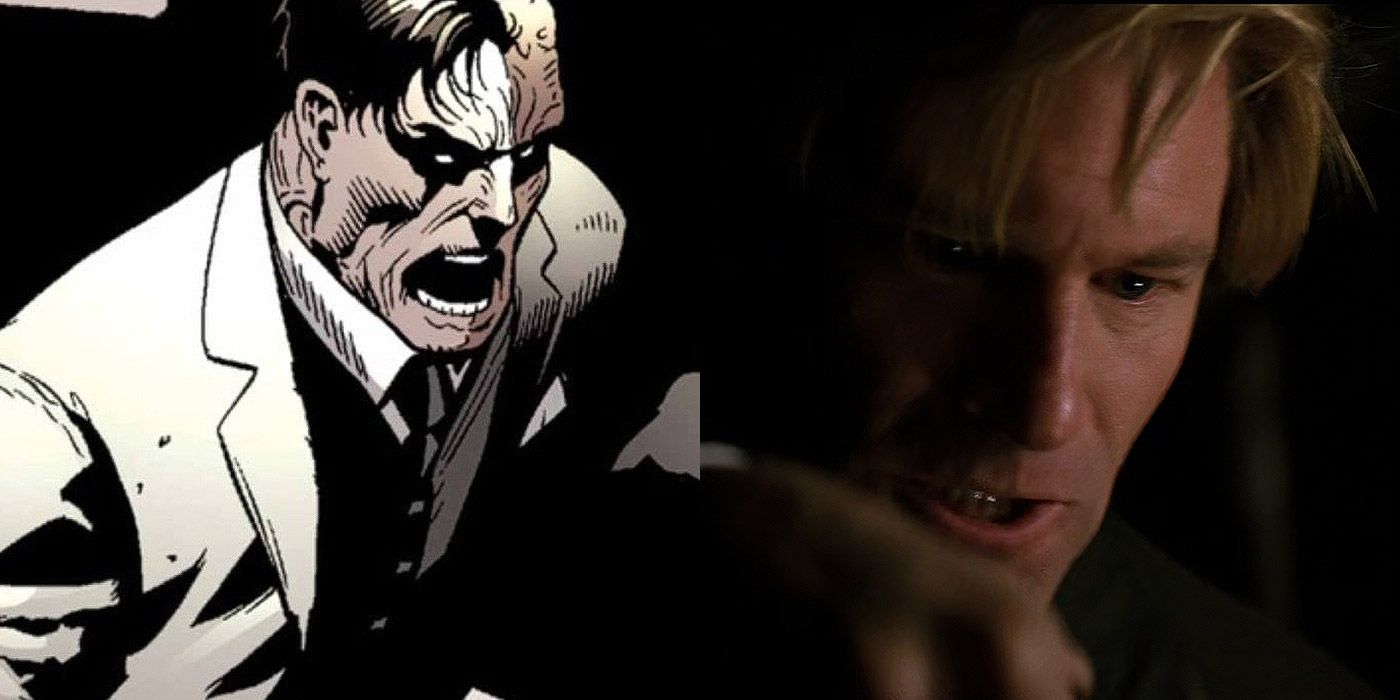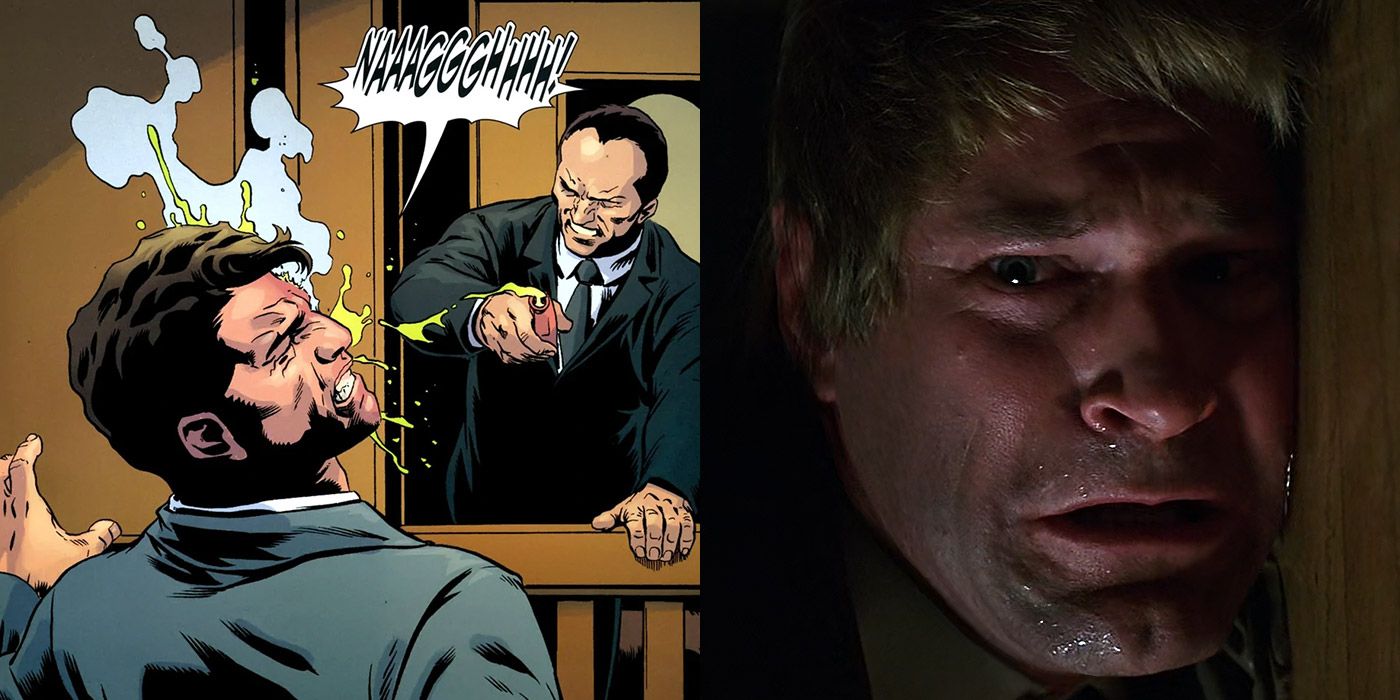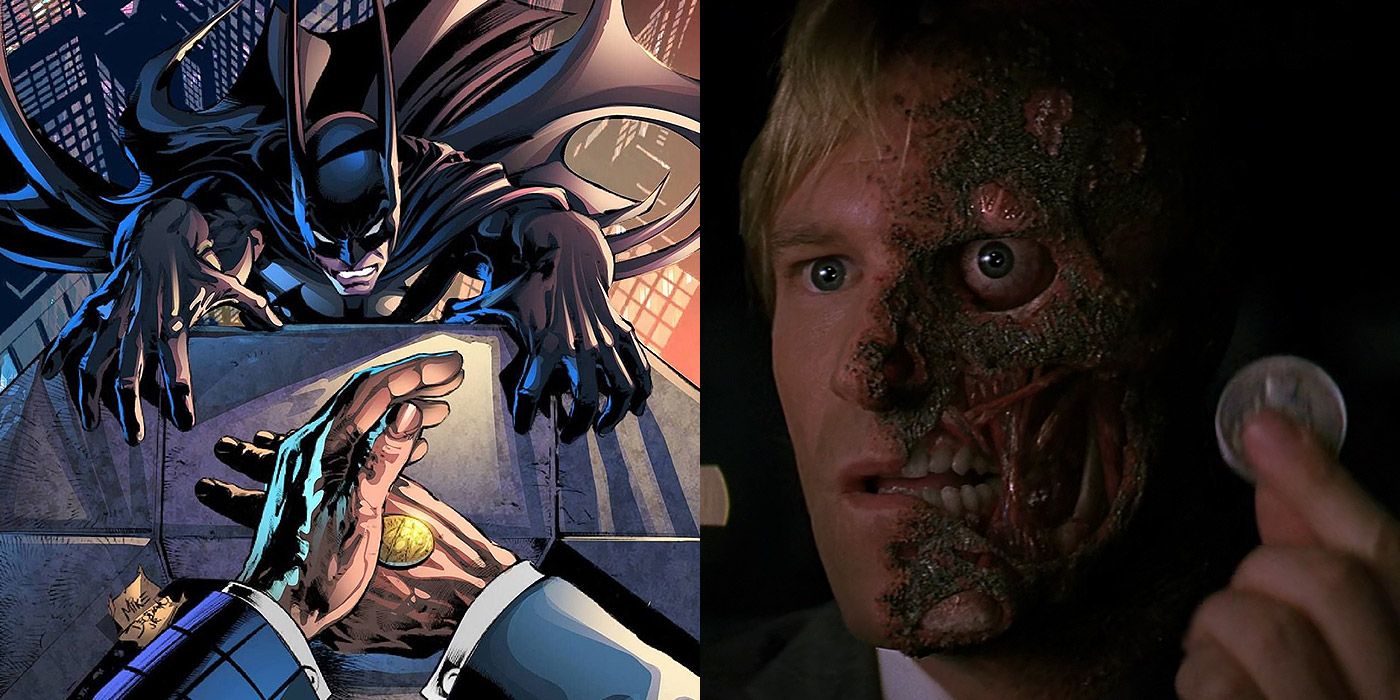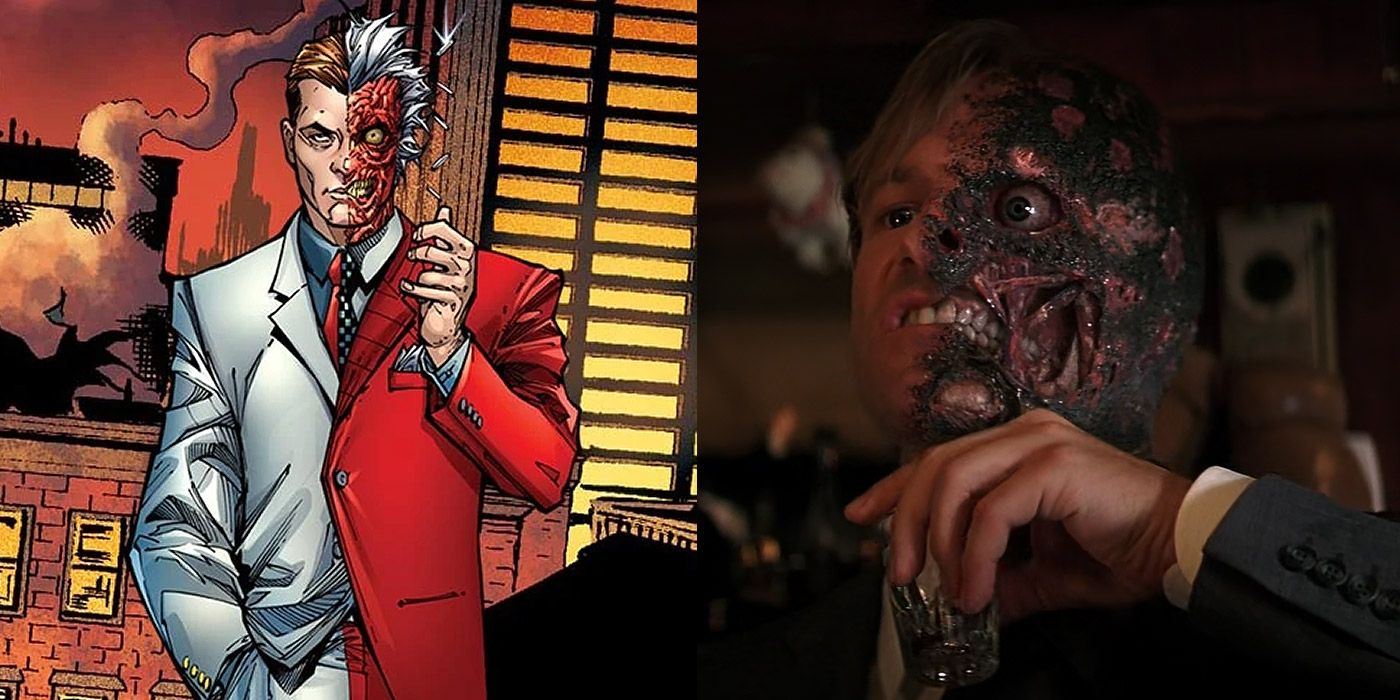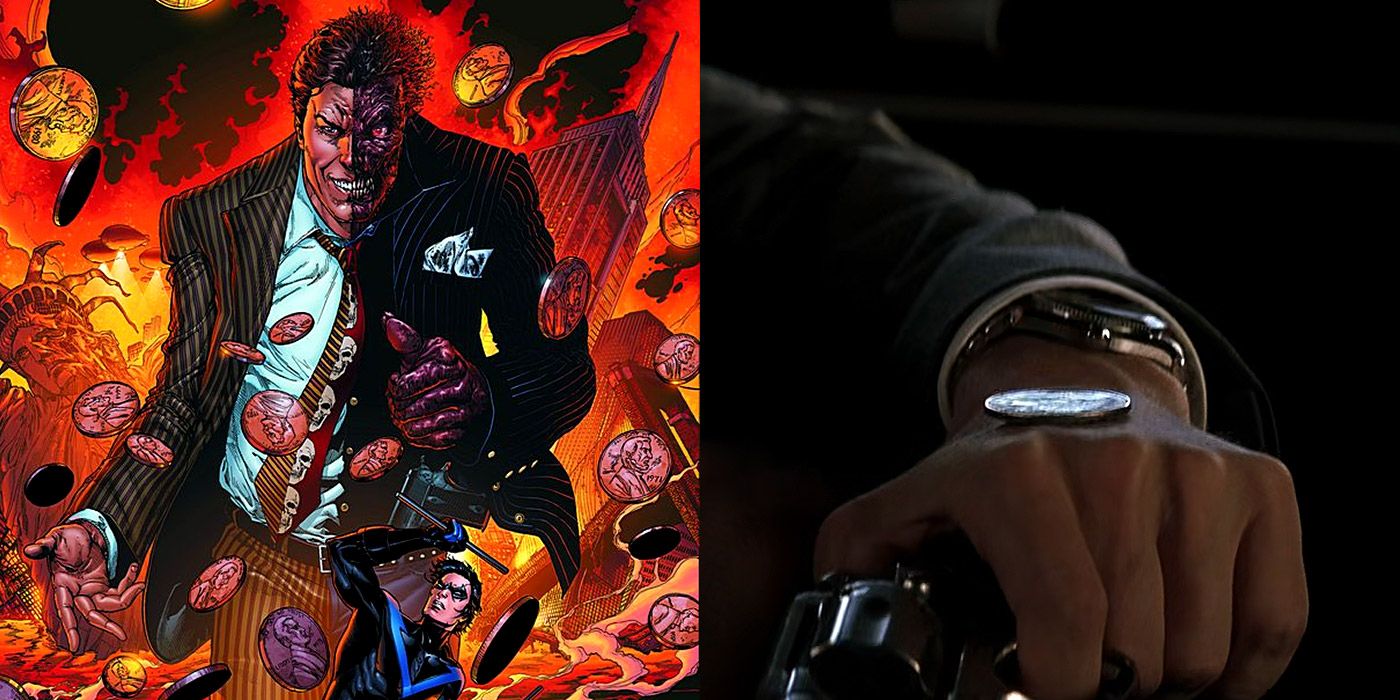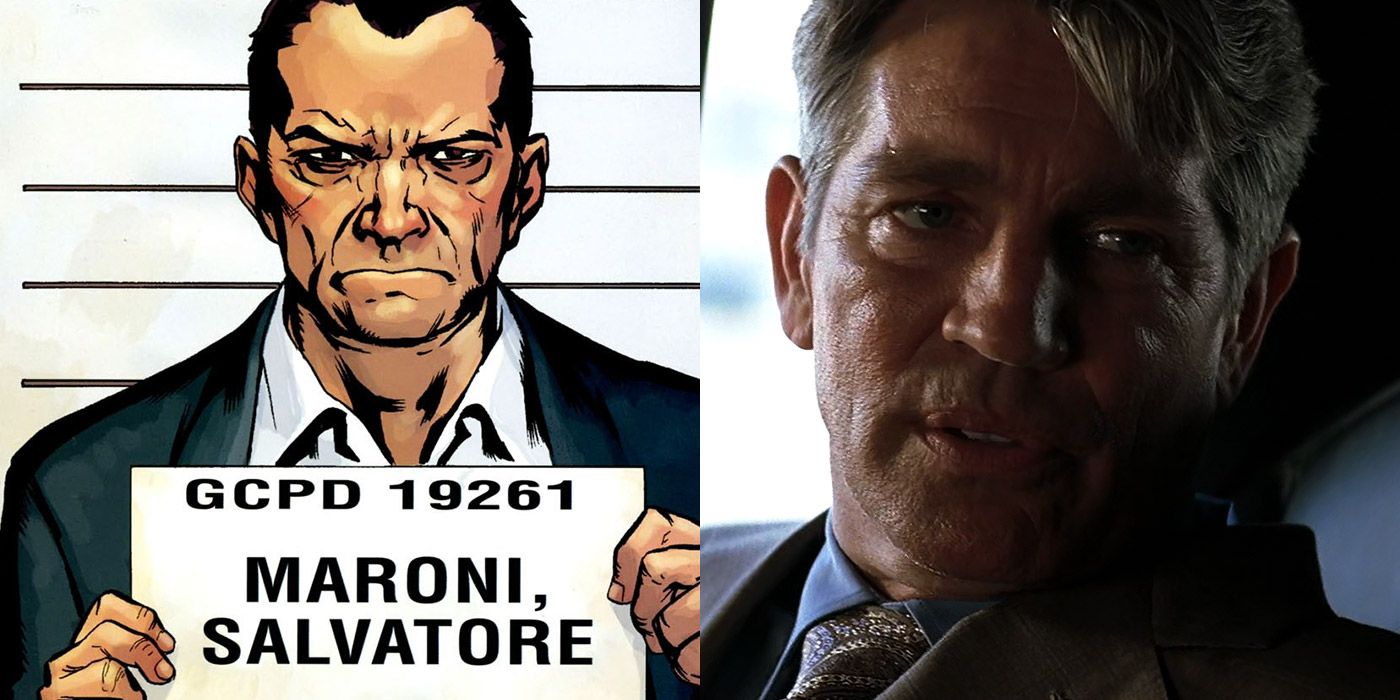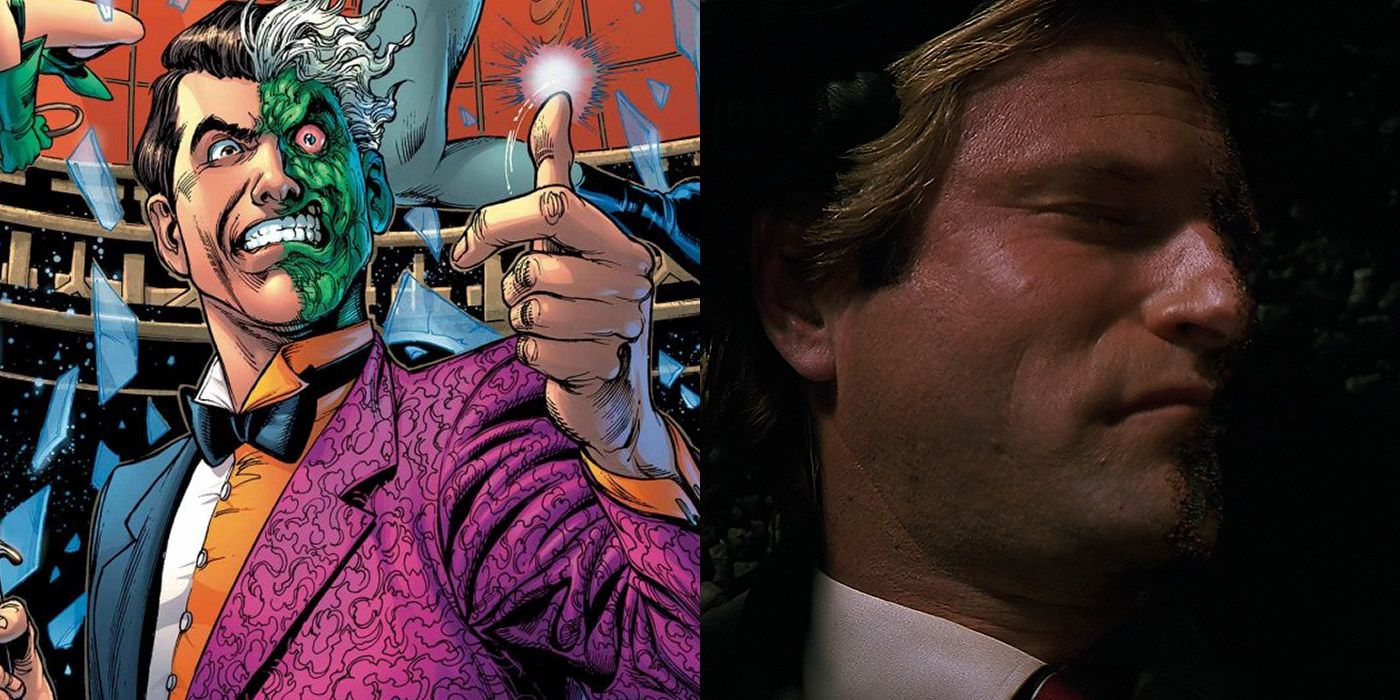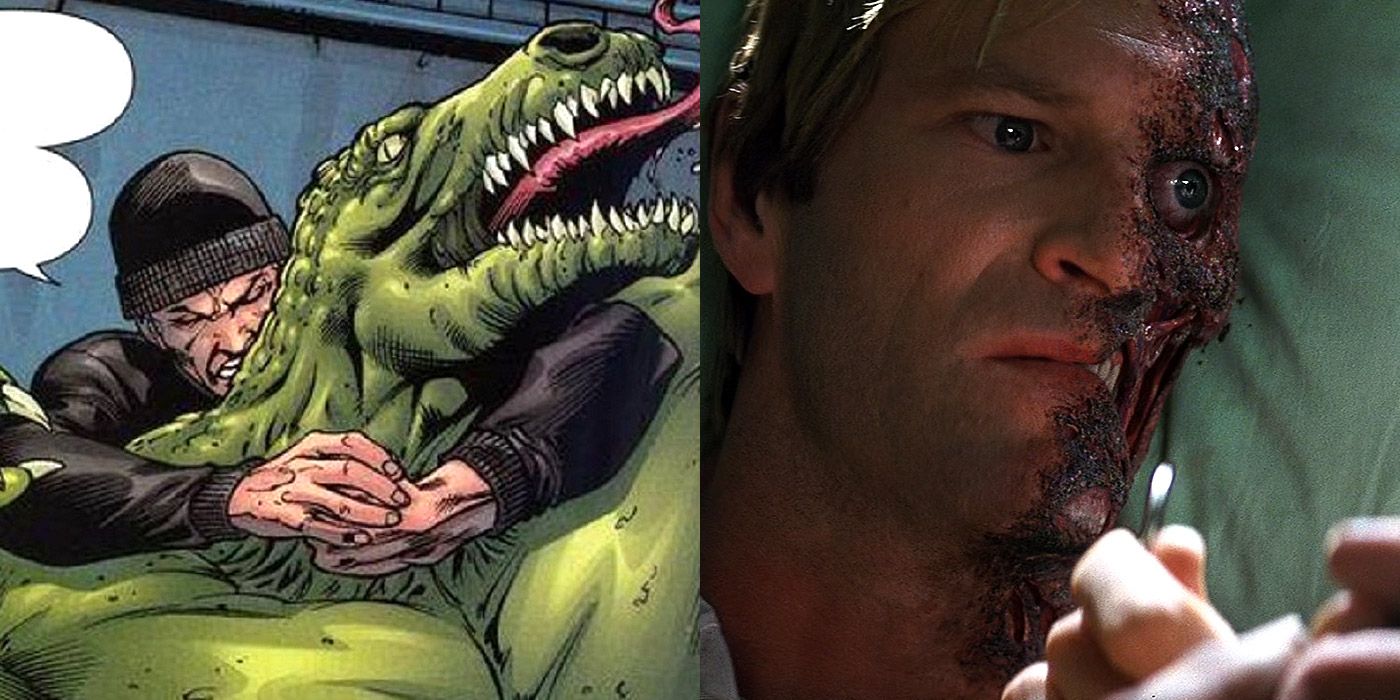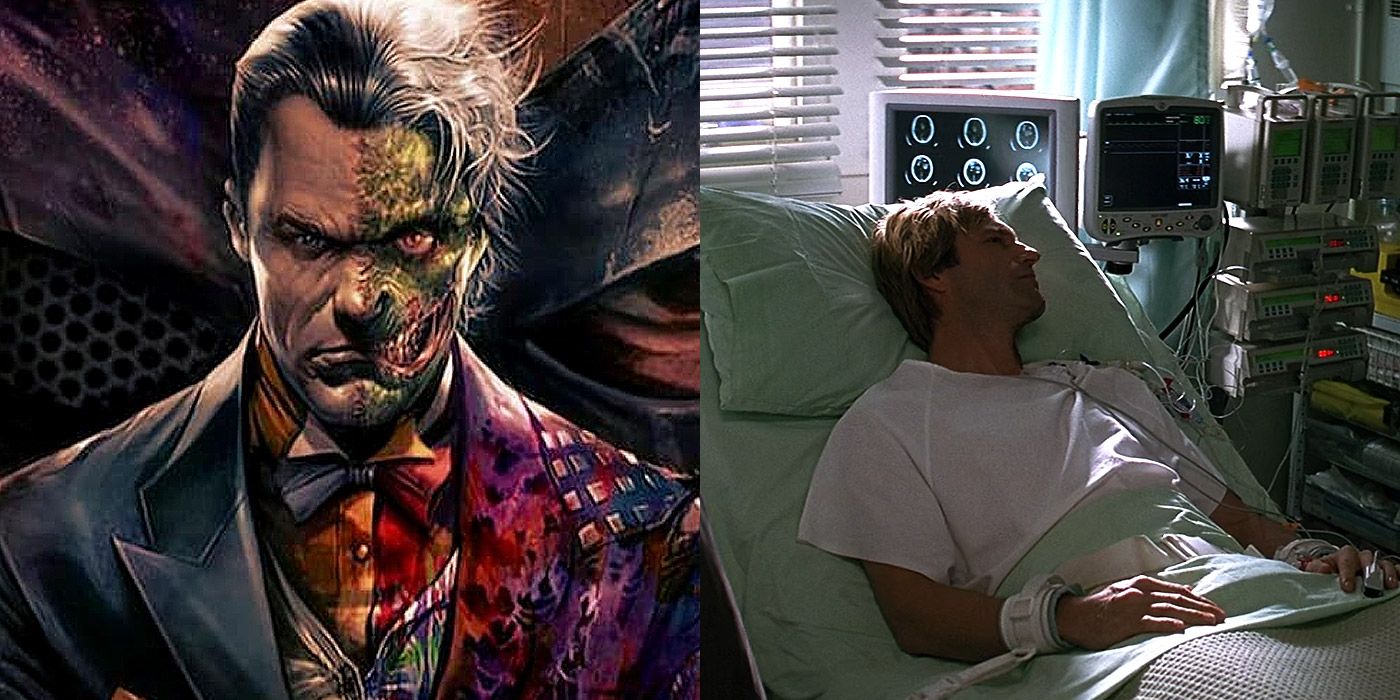Content Warning: the following article contains discussions on mental health
District attorney Harvey Dent had his whole life going for him until a mob attack left half his face scarred and his psyche permanently fractured. This traumatic event gave rise to Two-Face, one of Batman's most recognizable and oldest foes. This hero-turned-villain was introduced in Christopher Nolan's Dark Knight trilogy as a major character who would affect the entire storyline.
The cinematic depiction of both Dent and Two-Face differs significantly from the comic book source material, with several plot details embellished to create a fresher origin story. Fans of the films may not know the full details of the comic book character, but there are enough differences between the two that deserve to be pointed out.
Dent's Psyche
In the comics, Harvey Dent has bipolar disorder, rage issues, and a form of schizophrenia. After his face is scarred, he develops a dissociative identity with an obsession over chance and opposites.
In Nolan's films, Dent is viewed by everyone in Gotham, including Bruce Wayne, as a shining beacon of hope and goodness. The film version is driven mad by trauma over his injuries, and sorrow over the death of his beloved Rachel. That's a slightly different take on the comic book character, whose own psyche would go on to produce one of the best Batman villains in the entire series.
His Facial Scarring
In the early comic books, Two-Face's facial scarring was depicted largely as a distorted version of his unharmed face. The scarred portion was green in color, with distorted lips and eyebrows, along with an enlarged eyeball. This was the signature look for the character until the DC Universe was rebooted in 2011.
In the film, Dent's face is scarred not by an acid attack, but by an explosion that affects his whole body. As a result, his injuries are a lot more severe and are exacerbated by his refusal to be properly treated. Some signature traits of the character's look are still there, such as the enlarged eye, but it's a different set of injuries altogether.
Blaming The Batman For His Misfortune
Both versions of the character share an antagonistic relationship with Batman, but for different reasons. On the surface, they might appear similar, but one is born from trauma caused by a physical attack, while the other is created largely because his lover dies and he does not. In the comics, Dent blames Batman for not stopping the acid attack that scarred his face and ruined his life.
In The Dark Knight, Dent holds Batman responsible for not saving Rachel Dawes from being killed in an explosion. It's one of the clever ways that Christopher Nolan used the Dark Knight trilogy as a thematic parallel to help drive the entire narrative across in each of the three films.
Two-Face's Clothes Have A Different Meaning
The comic book version of Two-Face is well known for wearing clothing stitched out of different materials, with one side representing his Dent persona, while the other represents his villainous alter-ego. The two sides are meant to clash in order to signify his obsession with dualities and opposites.
In The Dark Knight, Two-Face wears the burnt suit that was on his body when Batman saved him from the explosion that scarred his face. This might have been because Harvey had nothing else to wear, or because he wanted to show the world how the traumatic event had irreversibly changed him for the worse.
The Coin Toss
In the comic books, Two-Face is not entirely beholden to the fate of his signature coin toss. There have been several instances where he decided to ignore the results, suggesting that he's more in control of his decisions and behaviors than it appears.
In The Dark Knight, however, Two-Face is beholden to the flip of his damaged coin. The film provided a bit of foreshadowing in the first act when it showed Harvey Dent talking to Rachel about his lucky coin. That item would take on a symbolic meaning after he survived the attempt on his own life. As Harvey is subsumed by his Two-Face identity, he relies almost exclusively on his coin to determine his final act: to kill Commission Gordon's son as punishment for Rachel's death.
The Sal Maroni Connection
In the comics, Harvey Dent is scarred when mob boss Sal Maroni throws acid in his face in retaliation for what he believed was the murder of his father. This connection is established in The Dark Knight when Harvey Dent is double-crossed by his mob witness, who switches his testimony in the middle of questioning before trying to murder him with a defective handgun.
Maroni is never tied directly to the scarring of Dent's face in the film, but his unholy alliance with the Joker creates a scenario where the mobster becomes implicated. The newly christened Two-Face uses his chance coin to dispense judgment on Maroni, and then his limousine driver, with deadly results.
The Comic Book Version Lives
The biggest difference between the film and comic book interpretations of the character is that one lives while the other does not. In the comics, Two-Face lives for a long time as he hatches multiple plans for citywide criminal domination and makes Batman's life constantly miserable. At one point, a reformed Harvey Dent is trained by Batman to become Gotham's protector in his absence, although this noble development was short-lived. Still, he remains one of the most irredeemable villains in the Rogue's Gallery.
In the film, Two-Face is swiftly killed by Batman before Dent could harm Commissioner Gordon's family. The entire affair is then covered up to protect Dent's legacy to give the citizens of Gotham hope for the future after the Joker nearly destroyed their city.
His Combat Prowess Is Different
As the movie version of Two-Face never had an opportunity to hone his skills, he's far different in comparison to the comic book version. In the comics, Two-Face was an excellent brawler who could hold his own in a fight with the Caped Crusader. Two-Face was also an expert marksman due to his training from the assassin-for-hire Deathstroke and even Batman himself.
In The Dark Knight, Dent gets up close and personal with all of his targets, usually surprising them and sticking them up at gunpoint, before deciding their fates. Yet the film Dent never showed any fighting prowess. Audiences never got to see the character in full criminal form with the mercenary skills to back it up.
The Comic Book Version Is An Actual Criminal
In the comics, Two-Face seems to embrace his newfound duality and goes out of his way to set up a criminal empire. He still uses his signature coin to decide whether he will actually go through with a crime, but there's no denying that his motivations are much more criminal in nature, as opposed to the vengeance that drives him in Nolan's film.
In The Dark Knight film, Two-Face is a tortured soul who experienced massive psychological trauma and seeks to bring harsh justice to those he thinks are responsible. His motivation is focused, singular and purposeful: to seek revenge for Rachel's death from those he deems responsible. He doesn't care about the rewards or glory that can come from being a Gotham criminal; all he cares about is seeking justice for his slain lover.

